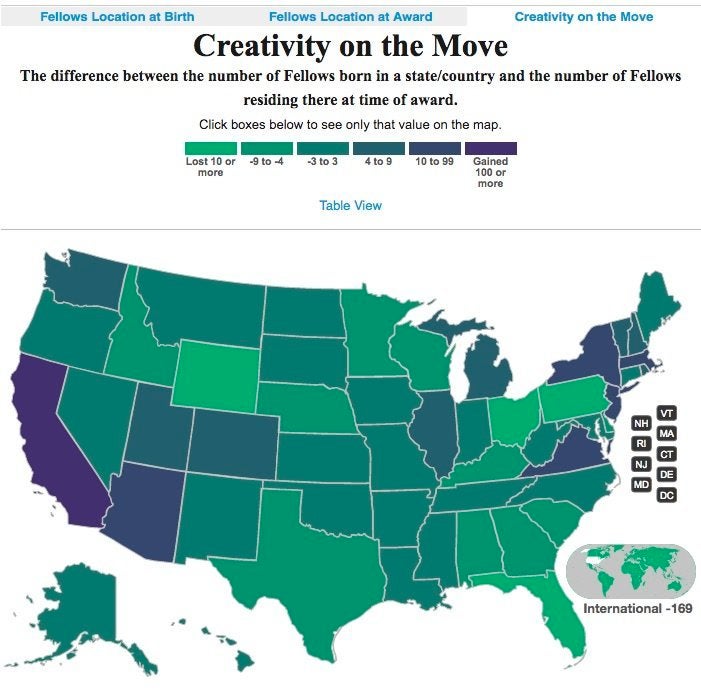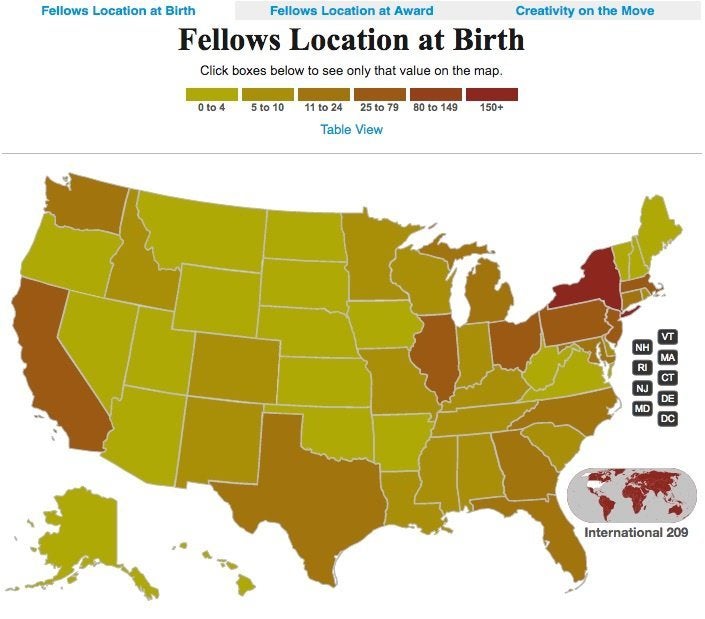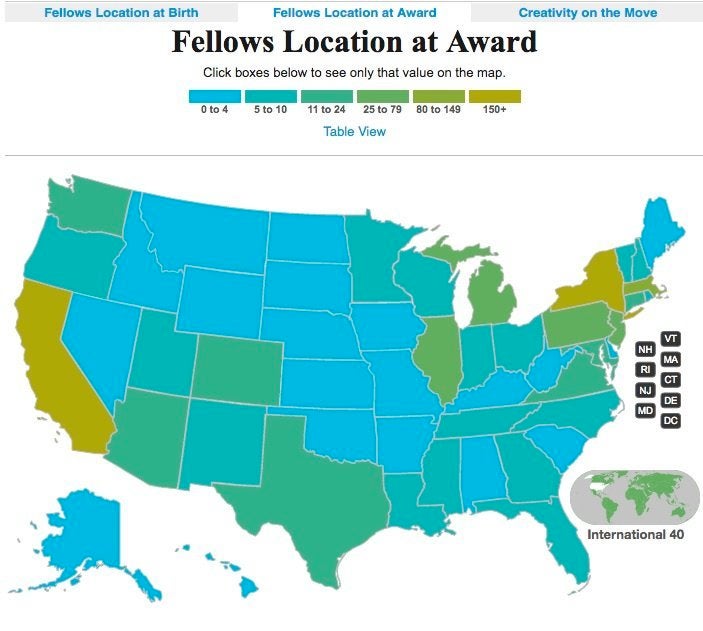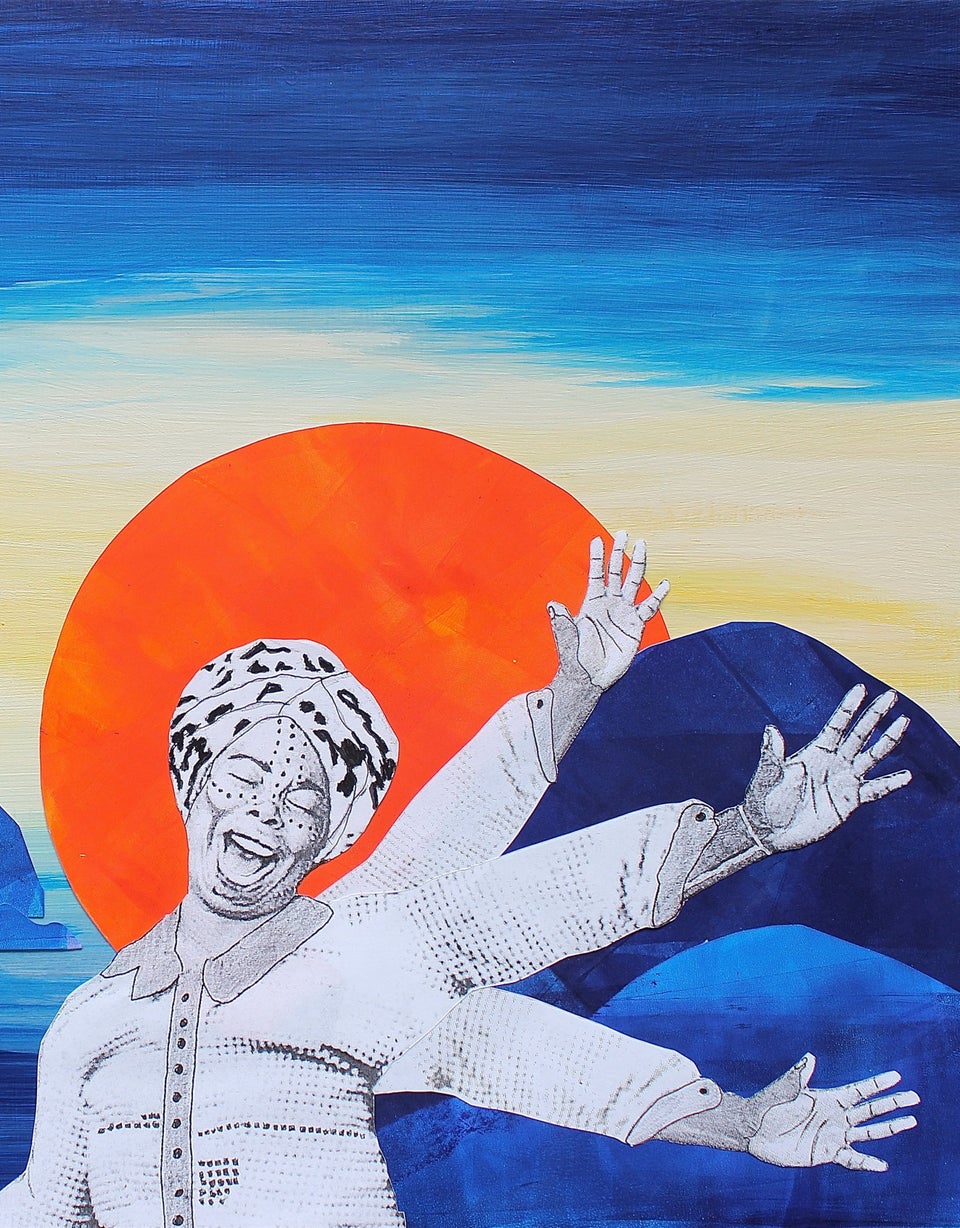Previously held assumptions, confirmed.
MacArthur ‘geniuses’ ― recipients of a fellowship that includes a no-strings attached $625,000 to continue their work ― are a mobile bunch, with 80 percent of awardees living outside the state they were born, according to the foundation’s data.
In comparison, about 30 percent of the general public was born in their current state of residence according to the U.S. Census Bureau.
This year’s fellows are no different: Composer Julia Wolfe was born in Philadelphia and moved to New York. Synthetic chemist Jin-Quan Yu grew up in a remote village in China and now resides in California. And video artist Mary Reid Kelley was born in South Carolina and is currently a New York state resident.

Intellectuals and creatives are pulled to California and New York
It’s part of a larger trend of creatives gravitating toward cities. Indeed, a fifth of American artists lived in one of five major metropolitan areas: Los Angeles, New York, Chicago, Washington or Boston, according to a 2008 National Endowment for the Arts report.
There’s also a link between intellect and moving, according to a 2014 study published in the journal Intelligence, which found an association between cognitive ability and migration from rural and suburban areas to city centers.
Of course a link doesn’t explain what causes this phenomenon, leaving a lingering question: Does moving foster creativity and intellect? Or are the best and brightest among us more inclined to move?


Opportunity is a driving force behind MacArthur mobility
Of the 965 MacArthur fellowships awarded since 1981, the most common birth states for MacArthur fellows were New York (166) and California (65), with most fellows residing in New York (208), California (185) and Massachusetts (112) at the time of their award.
“People move for a variety of reasons, but one driving factor is economic opportunity,” Cecilia Conrad, managing director of the MacArthur foundation, wrote in Time in 2014.
“Scientists tend to cluster near the research universities and high-tech corridors of Massachusetts and California. For those in the arts, the concentration of potential employers and prospective customers in New York City, Los Angeles, and San Francisco makes these urban centers attractive places to live.”
